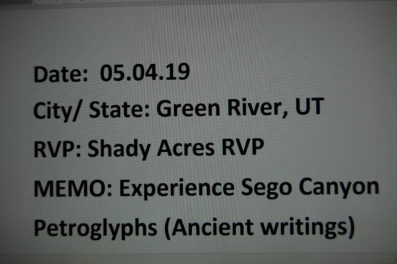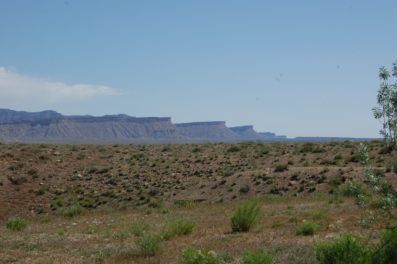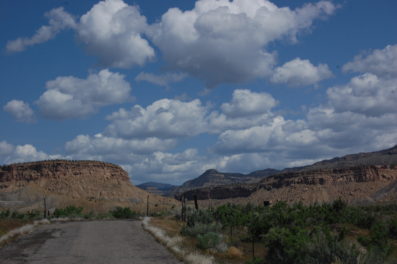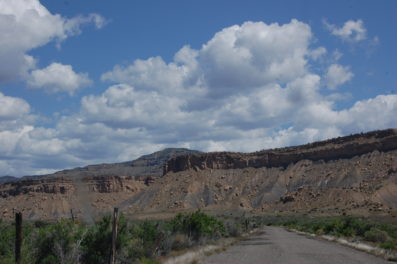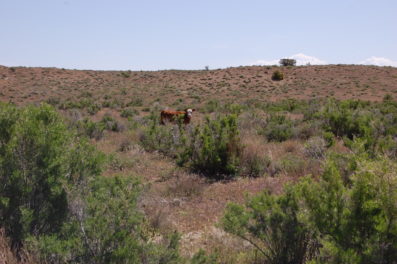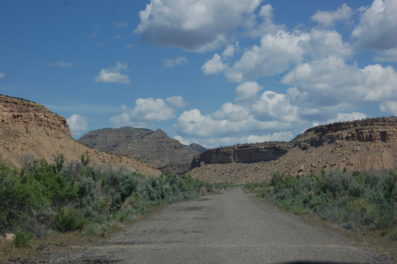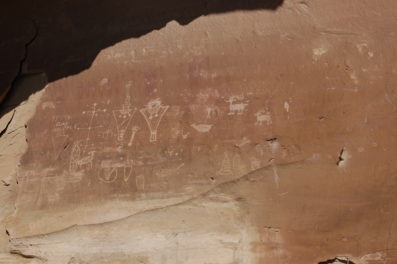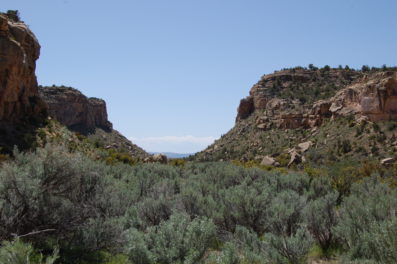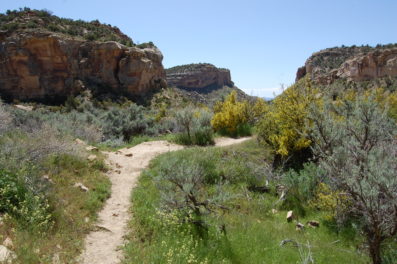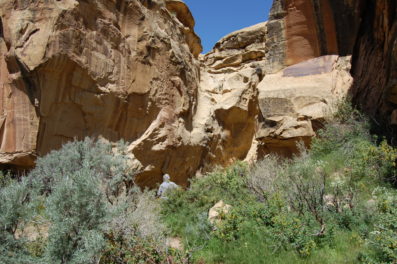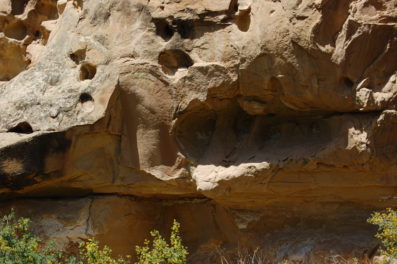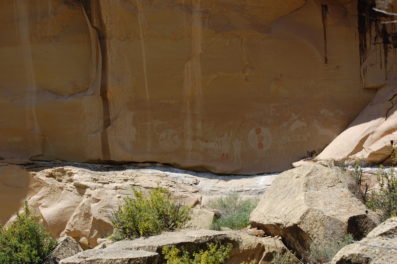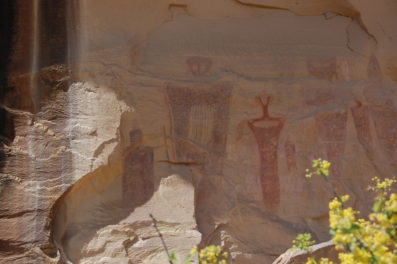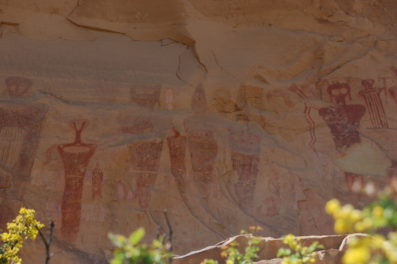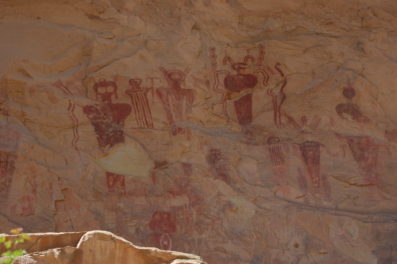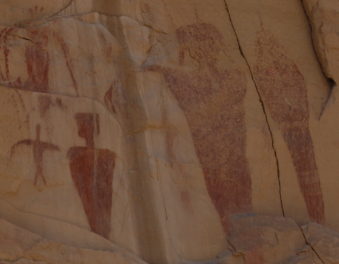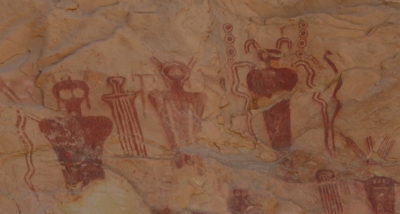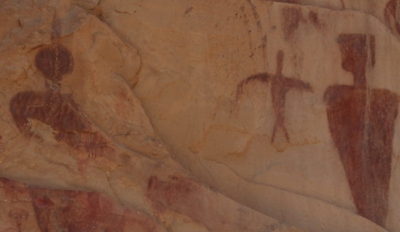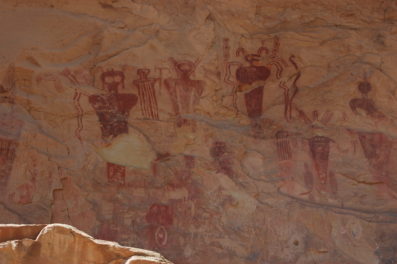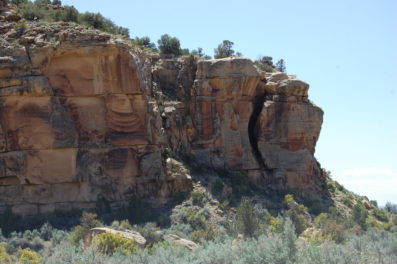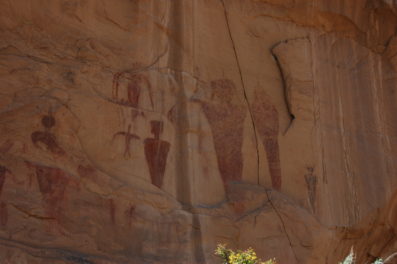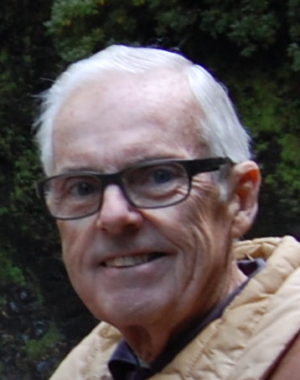
Please take the time to leave a comment at the bottom of this blog. I relish the positive ones and will learn from the negative ones.
HAPPINESS is to have EVERYTHING you NEED,
NOT the NEED to have EVERYTHING.
March/April ITENERARY
May 2nd Green River, UT at Shady Acres x4 nights (159m)
May 6th Heber, UT Mountain Valley RVR (2 layovers) x7n (234m)
May 16th Bend, OR TT (layovers TBD) x7n (654m)
June 5th Newport, OR at Whaler’s Rest
June 26th leave Newport, OR
*****************************************
May 4th- Experience Petroglyphs ???
Hope I peeked your interest. pet·ro·glyph, NOUN are rock carvings, especially prehistoric ones. For more information on this read the May 4th Blog on it.
23 April, 2014 – 23:26 aprilholloway
The haunting rock art of Sego Canyon – extra-terrestrials or spiritual visions?
The sandstone cliffs of Sego Canyon are a spectacular outdoor art gallery of petroglyphs painted and carved by Native Americans peoples over a period of around 8,000 years. They are characterised by more than 80 imposing and haunting life-sized figures with hollowed eyes or missing eyes and the frequent absence of arms and legs. Some claim that the mysterious figures are evidence of alien visitation in our ancient past, while scholars maintain that the strange beings represent shamanistic visions produced in trance-like states.
Above are four Mesas. In about a half hour or so we will be driving down a road in-between mesas two and three. Below is that road. It feels and looks like no one has been here in years.
Evidence of human habitation in Sego Canyon dates back to the Archaic Period (6,000 – 100 BC). But subsequent Anasazi, Fremont, and Ute tribes also left their mark upon the area, painting and chipping their religious visions, clan symbols, and records of events into the cliff walls.
Below is the only wild-life, a young calf, we’ve come across in the last two weeks.
The rock art of Sego Canyon can be characterised according to a number of distinctive styles, and time periods. The oldest art belongs to the Archaic period and dates to between 6,000 BC and 2,000 BC. Some of the most spectacular examples of rock art in the Southwest are attributed to Archaic people. They were nomads, who hunted large and small game animals, and collected and processed wild plants. They did not build permanent habitation structures, but lived in caves and in small brush shelters built in the open.
Above the road does not get any better. Below is the reason for our being here.
Within the Archaic period and beginning around 4,000 years ago, we see the Barrier Canyon Style rock art, a distinctive style of art which appears mostly in Utah, with the largest concentration of sites in and around the San Rafael Swell and Canyonlands National Park, but the full range extends into much of the state and western Colorado. Barrier Canyon Style rock art panels are mostly pictographs (painted) but there are also several petroglyphs (pecked) in the style.
Above is our looking back. We appear to be going downhill. For this reason, I’ve deduced, the Fremont peoples lived with a source of water. Back a couple of thousand years ago this area might have been totally flooded and this could have been a fairly deep lake, a good source of fish. Once we get closer to our objective our path becomes very primitive.
Fremont petroglyphs in Sego Canyon. Photo source .
Beginning 1300 AD and lasting until 1880 AD, the Ute people inhabited the region of Sego Canyon and carved their own style on the cliff faces. Prior to the arrival of Mexican settlers, the Utes occupied significant portions of what are today eastern Utah, western Colorado, and parts of New Mexico and Wyoming.
The Utes were never a unified group within historic times; instead, they consisted of numerous nomadic bands that maintained close associations with other neighbouring groups. The historic Ute rock art is identified and dated by the horse and rider figures.
Above and below are the reasons for our visiting this venue.
Horses were introduced to North America by the Spanish in the sixteenth century. Other figures, or elements, painted in red and white on the panel include a white bison, a human figure with leggings, several large human figures, and large circles believed to be shields. The Ute people lived freely throughout western Colorado and eastern Utah until about 1880, when they were forced onto reservations.
Extra-terrestrials or spiritual visions?
Advocates of the ancient astronaut theory suggest that the strange figures of the Barrier Canyon style rock art depict extra-terrestrials that once visited Earth. They point to the large, hollow looking eyes and the triangular shaped heads as evidence that the figures were not human. However, others, like researcher Polly Schaafsma (1999) say that they represent shamanistic art associated with ritual activities of the Archaic people. Ms Schaafsma points to the fact that the ‘spirit figures’ are frequently shown holding snake forms, and their torsos sometimes incorporate water/life-giving symbols. The presence of these types of relational (figure/animal) motifs is considered to be evidence that there was a shamanistic tradition alive, at least during a certain period of time, among these Western Archaic people. So what accounts for the unusual features, such as strange eyes, legless bodies, and what appears to be wings?
A close-up thanks for cropping.
According to Ms Schaafsma, shamanic practitioners, with the assistance of various spirits, were said to have the ability to travel to celestial realms and the underworld, in order to communicate with ‘purveyors of power’. Hallucinations and visionary experiences characterise the shamanic trance experience, often provoked by the use of hallucinogens.
Ute rock art, 1300 AD. Photo source
“With the aid of spirit helpers, tutelary deities, and divine or semi-divine beings, these otherworldly voyagers contact ancestral and supernatural powers in the interests of curing, fertility, divining, successful hunting, battle exploits, and weather control,” she wrote in a paper on the symbology of the Barrier Canyon rock art.
Universally, shamans have communicated their extraordinary experiences through art. Are the Sego Canyon pictographs and petroglyphs another example of this? No one really knows for sure what the images represent or why they were painted. The god-like, imposing and fantastical figures etched onto the cliffs of Sego Canyon remain an enigma and the true meaning behind them may never be unlocked.
Featured image: Petroglyphs in Sego Canyon. Photo source .
References
Sego Canyon Petroglyphs – Science Views
Trance and Transformation in the Canyons – by Polly Schaafsma
The Barrier Canyon Rock Art Style – by David Sucec
Traces of a Lost People – Smithsonian
Barrier Canyon Style Rock Art – by James Q. Jacobs
<font color=”#00008″>Dark Blue</font>
>Columns seen at the bottom of the picture are Hoodoos.BLUE
<font color=”#00008″>Dark Blue</font>
